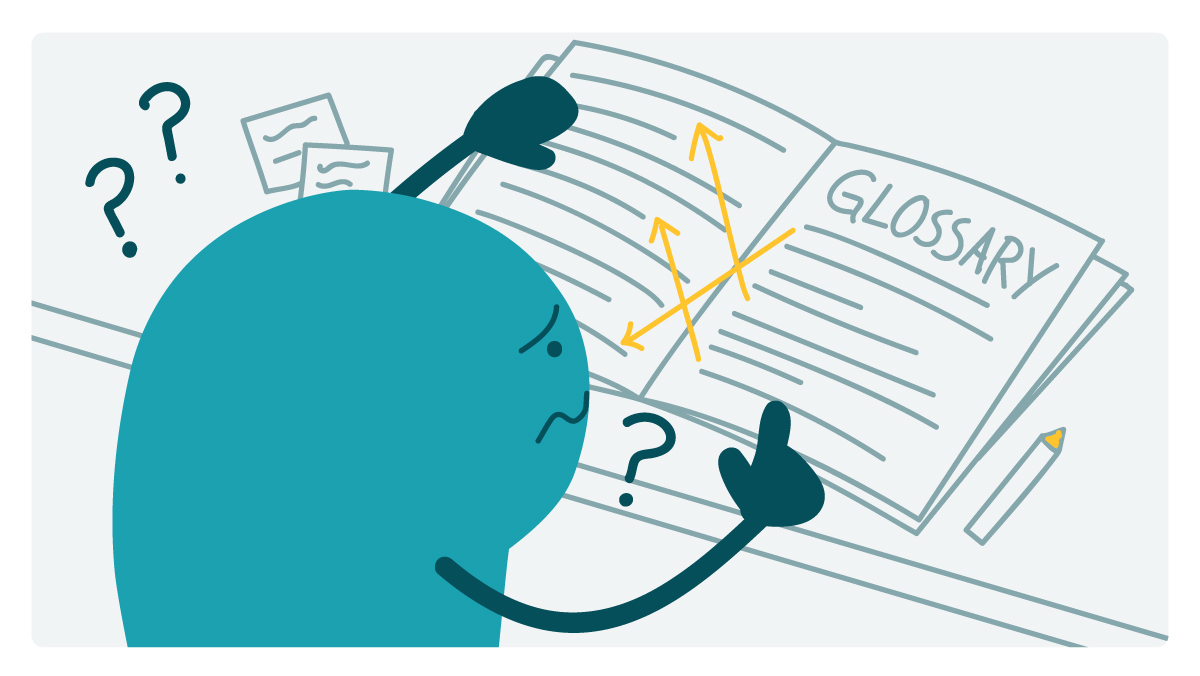
Picture this, dear readers: Your team has just started a new project — let’s say you’re developing content for an app to help people with HIV manage their care. As your team is doing some initial content strategizing, you keep talking about the sheer number of jargon terms that are relevant to this particular topic (think “viral load” and “pre-exposure prophylaxis”). How will readers possibly keep track of all these terms?!
That’s when it hits you: the million-dollar idea. You’ll create a custom glossary with all the potentially unfamiliar or confusing terms, and your audience can refer to it whenever they get tripped up. It’s a win for everyone! Users have all the jargon terms clearly laid out in 1 place, and you don’t have to use all your content real estate explaining — and potentially reexplaining — tricky terms.
Problem solved, right? Well, maybe not. While the concept of a glossary to help with jargon terms in plain language content makes a lot of sense at face value, there’s a catch: Glossaries can be a real problem for users with limited literacy skills. That’s because glossaries require cross-referencing. So in a typical glossary experience, the user would:
- Come across a word they don’t know
- Stop reading and navigate to the glossary in question, whether it’s on the page they’re reading or it’s a hover situation
- Locate the definition in the glossary (sometimes easier said than done!)
- Take their new word knowledge back to the content they were reading
- Resume reading
Now this might work okay for some people, but that kind of cross-referencing is quite taxing from a cognitive load perspective — it asks a lot of folks’ working memory. And that’s a big part of why people with limited literacy skills are more likely to get distracted, reread words or phrases, and lose their place when they read. Now with that context in mind, consider the “workflow” of using a glossary. Yeah.
Instead, we say stick to the tools that are already in your plain language and health literacy best practice toolbox — using plain language alternatives when appropriate, defining jargon terms in context, and teaching the terms that folks are likely to run into again. In our hypothetical app situation, you might also consider defining terms — for example, “the amount of HIV in your body (called viral load)” — in multiple places across your content. That way, users are seeing key terms with their definitions throughout the app, which can really help reinforce learning.
To be clear, we’re not saying glossaries are all bad. They can be a great tool to help writers find plain language substitutes. And you might run into a situation where a brief list of key terms could make sense for consumers. Just don’t rely on a glossary alone to get the job done — make sure you still use all those plain language best practices we know and ❤️ !
The bottom line: Using glossaries means cross-referencing, which can be tricky for people with limited literacy skills. So skip the glossary in your health materials — and stick with tried-and-true plain language best practices instead.
Browse recent posts